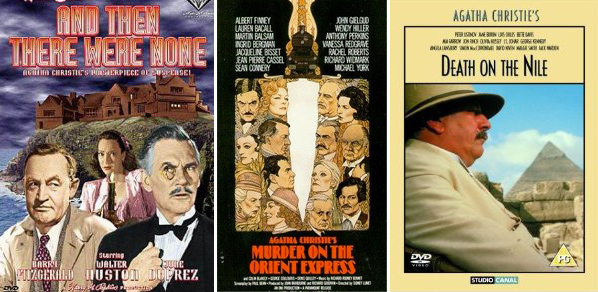
There have been several film adaptations of Agatha Christie novels, but by far, some of the best have been And Then There Were None (1945), Murder on the Orient Express (1974) and Death on the Nile (1978).
And Then There Were None is a 1945 film adaptation of Agatha Christie’s novel of the same name that was published in 1939. Agatha Christie had once said that And Then There Were None was one of the most difficult novels to write.
The story goes like this…
A motley group of people are invited for the weekend to a mansion tucked away in an isolated island. Upon arriving, they are met by a rather timid butler and his wife. Oddly enough, their host fails to turn up. Nevertheless, all of them are glad that they had come. But, as it happened, they were horribly wrong… Over dinner, an unseen voice (as it turns out later, a gramophone record had been playing) accuses them of their past misdemeanors; each of them had been complicit in the deaths of others, but had escaped punishment. All of them are startled. Not long afterwards, one of the guests is found dead. Before long, another one turns up dead. The guests now realize that they had been tricked into coming. The needle of suspicion pointed to their host who seemed bent on striking again. The guests decide to leave, but they couldn’t, as the boat that had brought them there had already left.
Directed by the highly acclaimed French director, Rene Clair, this black & white film starring Barry Fitzgerald, Walter Huston, Louis Hayward and June Duprez has a mix of gripping suspense and wry humor. The film, with a runtime of approximately 97 minutes, remains faithful to the novel by Agatha Christie, with one exception- it doesn’t end the same way as the latter ends. And Then There Were None won the best film at the Locarno Film Festival.
Murder on the Orient Express is a 1974 film adaptation of Agatha Christie’s novel of the same name that was published in 1934.
The story goes like this…
After cracking a case in Syria, Belgian detective Hercule Poirot boards the famed Orient Express from Istanbul. The luxury passenger train is unusually crowded for that time of the year. A wealthy businessman is found murdered aboard the train the following morning. What makes it baffling is that he had been stabbed 12 times. Hercule Poirot is soon called upon to investigate the murder. What follows, is simply mind-blowing.
The tagline of the film Murder on the Orient Express, directed by Sidney Lumet was, “The greatest cast of suspicious characters ever involved in murder.” The film, with a runtime of approximately 128 minutes, has an ensemble cast led by Albert Finney (as Hercule Poirot), Ingrid Bergman, Sean Connery, Jacqueline Bisset, Lauren Bacall and Anthony Perkins, among others. Incidentally, the Swedish actress Ingrid Bergman went on to bag an Oscar for her performance in Murder on the Orient Express. The film, like the book, has you guessing throughout who the killer is.
Death on the Nile is a 1978 film adaptation of Agatha Christie’s novel of the same name that was published in 1937. Death on the Nile happens to be one of the most ingeniously plotted of Agatha Christie’s novels.
The story goes like this…
A rich heiress honeymooning in Egypt is found murdered aboard a luxury steamer cruising down the Nile. Almost everybody on board the luxury steamer had a reason to want to do away with the rich heiress. The irrepressible Belgian detective Hercule Poirot happens to be one of the passengers aboard. He soon sets on to investigate the murder. Hercule Poirot who is famed for his ‘little grey cells’ needs all his skills to uncover the cold blooded murderer who had shot the rich heiress through the head.
The film, directed by John Guillermin, with a runtime of approximately 140 minutes, has the legendary Peter Ustinov playing Hercule Poirot. The cast includes Jane Birkin, Mia Farrow, Bette Davis, Angela Lansbury and I.S Johar, among others. Anthony Powell won an Oscar for the best costume design for this film. Death on the Nile was shot at breathtaking places in Egypt, such as – naturally – the Nile, the pyramids of Giza, the ruins of Karnak, Luxor and Abu Simbel.
– Sanjay Sivadas
Images: IMDb.com







